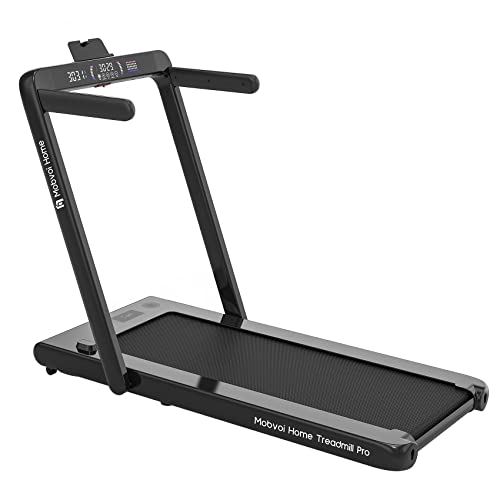Treadmills: A Comprehensive Guide to Understanding Their Functionality, Benefits, and Appropriate Selection
Intro
Treadmills have actually become a staple in contemporary fitness regimens, both in homes and health clubs worldwide. They use a practical and effective method to preserve cardiovascular health, increase endurance, and help in weight management. This article explores the different kinds of treadmills, their advantages, features to consider when acquiring, and some FAQs to assist users in making notified choices.
Types of Treadmills
When it pertains to picking a treadmill, it is important to understand the different types available in the market. Here are the main categories:
1. Handbook Treadmills
- Mechanism: These treadmills have a basic design and depend on the user's efforts to move the belt.
- Pros: More inexpensive, quieter operation, no electrical energy needed.
- Cons: Limited functions, might not supply the exact same variety of exercise strength.
2. Motorized Treadmills
- System: Powered by a motor that drives the belt, allowing users to walk or run at a set speed.
- Pros: Greater range of speeds and inclines, equipped with various functions such as heart rate displays and workout programs.
- Cons: More expensive and might require more upkeep.
3. Folding Treadmills
- System: Designed for those with minimal area, these treadmills can be folded for simple storage.
- Pros: Space-saving, typically motorized, versatile functions.
- Cons: May be less durable than non-folding designs.
4. Commercial Treadmills
- Mechanism: High-quality machines developed for usage in gyms and physical fitness centers.
- Pros: Built to withstand heavy use, advanced functions, frequently include service warranties.
- Cons: Pricey and not perfect for home usage due to size.
5. Curved Treadmills
- System: A distinct style that allows users to propel the belt utilizing their own energy.
- Pros: Offers a more natural running experience, promotes better running type.
- Cons: More pricey and can be noisier.
| Treadmill Type | Pros | Cons |
|---|---|---|
| Manual | Budget friendly, no electricity needed | Minimal features |
| Motorized | Range of speeds, advanced features | Upkeep required |
| Folding | Space-saving, frequently motorized | May lack toughness |
| Industrial | Built to last, professional-grade features | Pricey |
| Curved | Natural running experience, promotes good kind | Greater price |
Advantages of Using Treadmills
Treadmills offer many benefits that can add to one's total health and wellness objectives. A few of these advantages consist of:
- Convenient Workouts: Treadmills allow users to exercise inside no matter weather.
- Cardiovascular Health: Regular use can improve heart health by increasing stamina and promoting healthy flow.
- Weight Management: Effective for burning calories, which helps in weight-loss and management.
- Customizable Workouts: Users can manage speed, slope, and duration to produce customized workout experiences.
- Security: Treadmills supply a foreseeable surface area, decreasing the threat of falls compared to outdoor running.
- Multifunctional: Many treadmills featured functions like heart rate monitors, workout programs, and even home entertainment systems.
Picking the Right Treadmill
When choosing a treadmill, prospective buyers should consider a number of essential elements:
Features to Consider:
- Motor Power: Typically determined in horse power (HP), a motor strength of at least 2.5 HP is suggested for serious runners.
- Belt Size: A longer and wider belt accommodates various stride lengths, offering comfort throughout workouts.
- Slope Settings: Adjustable incline features imitate outdoor hill running and can increase workout strength.
- Weight Capacity: Ensure the treadmill can support the user's weight for security and durability.
- Console Features: Look for user-friendly dashboards, workout programs, and Bluetooth compatibility for streaming music or other functions.
Spending plan Considerations
- Under ₤ 500: Entry-level manual treadmills ideal for casual walkers.
- ₤ 500 - ₤ 1,500: Mid-range motorized treadmills that offer more functions and much better resilience.
- ₤ 1,500 - ₤ 3,000: High-end designs with innovative technology, bigger motors, and longer warranties.
- Over ₤ 3,000: Commercial-grade treadmills perfect for frequent use in gyms or training centers.
Regularly Asked Questions (FAQs)
1. How often should I use a treadmill?
It is suggested to utilize a treadmill at least 3 to five times a week, integrating numerous strength levels for best results.
2. Can I lose weight by utilizing a treadmill?
Yes, consistent usage of a treadmill can contribute to weight-loss, especially when integrated with a balanced diet and strength training.
3. What is the best speed to stroll on a treadmill for novices?
A speed of 3 to 4 miles per hour is an ideal variety for beginners. Running Machines UK to start sluggish and gradually increase pace as comfort and endurance enhance.
4. Do I need to utilize a treadmill if I already run outdoors?
Using a treadmill can offer fringe benefits, such as regulated environments and differed exercises (slope, intervals) that are not always possible outdoors.
5. How do I maintain my treadmill?
Routine upkeep includes oiling the belt, cleaning up the deck and console, and checking the motor for optimal efficiency.
Treadmills are important tools for those aiming to enhance their fitness levels in a controlled and convenient manner. With various types offered, understanding their functions and benefits is vital for making an informed purchase. By thinking about individual workout requirements, space schedule, and budget restraints, people can discover the most appropriate treadmill that fits their way of life. Incorporating UK Treadmill into a well balanced fitness regimen can cause better health results and an enjoyable workout experience.

